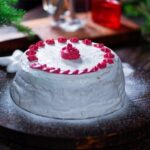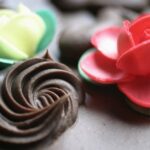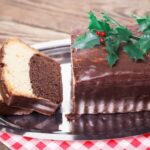Welcome to the magical world of decorated cakes, where artistry and sweetness collide. In this article, we will delve into the captivating realm of cake decoration and why it has become a beloved trend. From the intricate designs to the vibrant colors, decorated cakes have captured our hearts and taste buds for centuries.
The history of cake decoration is as rich and diverse as the cakes themselves. Throughout the years, this art form has evolved from simple embellishments to elaborate masterpieces that showcase both creativity and skill. We will take a journey through time to explore how cake decoration has transformed and adapted to various cultures and celebrations.
No matter what the occasion, decorated cakes hold significant meaning. Be it birthdays, weddings, or milestone anniversaries, these edible creations play a central role in commemorating special moments. We will uncover why customized designs have gained popularity in recent years and share heartwarming stories of exceptional cakes that truly captured the essence of these occasions.
So come along as we embark on this enchanting exploration of decorated cakes. Whether you’re an aspiring baker or simply appreciate the artistry involved, prepare to be inspired by the beauty, creativity, and deliciousness that these confections bring to our lives. Let’s celebrate the art of decorated cakes together.
The Basics
When it comes to creating a stunning decorated cake, there are several key components that come together to make a truly memorable and visually appealing dessert. Understanding these fundamental elements is essential for any aspiring cake decorator.
One of the first considerations when planning a decorated cake is the flavors, fillings, and textures that will enhance the overall design. Choosing complementary flavors is important for creating a harmonious balance, while interesting fillings can add an extra layer of decadence and surprise. Additionally, considering the texture of the cake is crucial as it can influence how the decorations adhere and hold up on the surface.
Equally important is selecting the right base cake for your creation. The base cake serves as the canvas for your decorations and can greatly impact the final presentation. Different types of cakes have different properties; some are dense and sturdy, while others are light and delicate. Deciding on the appropriate type of cake will help ensure that your decorations stay intact throughout the event.
| Flavor Combination | Suitability |
|---|---|
| Vanilla with raspberry filling | Classic choice for weddings |
| Chocolate with salted caramel filling | Rich and indulgent option for birthdays or special celebrations |
| Lemon with coconut cream filling | Refreshing choice for summer events or baby showers |
By understanding these basic components of a stunning decorated cake, aspiring decorators can lay a strong foundation for their designs. With the right flavors, fillings, textures, and base cake, the stage is set for creating a visually striking and delicious masterpiece.
Unveiling the Craft
Decorating a cake is not only about the final design, but also about the techniques used to bring it to life. Skilled cake artists employ a variety of methods and tools to create stunning masterpieces. In this section, we will explore some of these techniques and provide step-by-step tutorials for aspiring decorators.
Piping is one of the most popular and versatile cake decorating techniques. It involves using a piping bag fitted with different types of tips to create intricate designs, patterns, and lettering on cakes. From simple borders and rosettes to elaborate floral arrangements and lace-like details, piping allows decorators to add texture and dimension to their creations.
Another technique that has gained popularity in recent years is fondant modeling. Fondant is a smooth icing made from sugar, water, and gelatin, which can be rolled out like dough and draped over a cake to create a flawless finish. With fondant modeling, decorators can shape the icing into various figures and objects, such as flowers, animals, or even characters from pop culture.
Sugar crafting is another skill that takes cake decoration to the next level. It involves creating delicate decorations out of edible sugar paste or gum paste. Using molds, cutters, shaping tools, and edible colorants, decorators can craft intricate flowers, leaves, bows, and other ornaments that add elegance and uniqueness to their cakes.
| Piping | Fondant Modeling | Sugar Crafting |
|---|---|---|
| 1. Attach the desired piping tip onto a piping bag filled with buttercream icing. | 1. Knead fondant until smooth and pliable. | 1. Roll out sugar paste/gum paste on a clean, non-stick surface. |
| 2. Hold the bag at a 45-degree angle and apply pressure to create desired shapes or patterns on the cake. | 2. Roll out the fondant to desired thickness and drape it over the cake. | 2. Use shaped cutters or molds to create desired sugar decorations. |
| 3. Practice piping different designs, such as rosettes, shells, and borders, before attempting more complex patterns. | 3. Mold fondant into desired shapes using shaping tools or your hands. | 3. Allow sugar decorations to dry and harden before attaching them to the cake using edible glue or water. |
Remember that mastering these techniques takes practice and patience. Aspiring cake decorators should start with simpler designs and gradually build their skills before attempting more advanced ones. With dedication and creativity, anyone can unleash their inner artist and decorate cakes like a pro.
Glitter and Glamour
Turn up the Sparkle: Edible Shimmer and Metallic Finishes
One of the most eye-catching trends in decorated cakes is the use of glitter and metallic finishes. These shimmering details add a touch of glamour and luxury to any cake design, making it truly stand out. There are various ways to achieve this dazzling effect, including edible shimmer dust, luster sprays, and gold or silver leaf applications.
Edible shimmer dust is a popular choice for adding sparkle to decorated cakes. It comes in a range of colors and can be applied in different ways, depending on the desired effect.
For a subtle shimmer, you can dust the entire cake with a light layer of shimmer dust using a soft brush. If you prefer a more intense sparkle, mix the shimmer dust with clear alcohol or lemon extract to create a paint-like consistency and apply it strategically on specific areas of the cake.
Another option for creating a glamorous finish is through luster sprays. These aerosol cans contain edible food coloring mixed with alcohol or oil-based ingredients that create a fine mist when sprayed onto the cake. Luster sprays provide an even coverage of color and shimmer, giving your cake an instant wow factor. They are available in metallic shades like gold, silver, rose gold, and bronze.
For those seeking an opulent look, gold or silver leaf applications are perfect choices. Applying delicate sheets of edible gold or silver leaf onto the cake requires precision and patience but yields stunning results. The metallic sheen adds an air of luxury to any design, whether used sparingly as accents or covering entire tiers for a show-stopping effect.
Inspiring Designs: Adding Shimmering Details to Decorated Cakes
When it comes to incorporating glitter and glamour into your decorated cakes, there are endless possibilities for designs that will leave everyone in awe. From elegant wedding cakes to extravagant birthday creations, shimmering details can take any cake to the next level.
One popular trend is combining metallic finishes with floral designs. Imagine a white wedding cake adorned with delicate sugar flowers, dusted with gold shimmer for an ethereal touch. The contrast between the soft petals and the glimmering gold creates a striking and romantic look.
Another stunning option is creating geometric patterns or sleek lines using glitter or metallic finishes. This modern aesthetic works well for birthdays or special occasions where you want a contemporary and sophisticated cake design. Choose contrasting colors such as silver on black or gold on navy blue to make your design pop.
For themed cakes, incorporating glitter and glamour can elevate the overall look and feel of the design. From princess-themed cakes dusted with edible glitter to glam rock-inspired creations adorned with metallic accents, there are endless ways to add that extra touch of sparkle that brings the theme to life.
Expert Tips: Achieving Shimmering Perfection
When working with glitter and metallic finishes, it’s essential to keep a few expert tips in mind to ensure your decorated cake shines.
- Begin by practicing on small elements before tackling larger portions of your cake. This will help you perfect your technique and avoid any mistakes on your main design.
- Use food-safe products specifically made for decorating purposes. Always check labels and choose products suitable for consumption.
- Apply shimmer dust or luster sprays in a well-ventilated area or outdoors to avoid inhaling any particles.
- When applying gold or silver leaf, use tweezers or a small brush to handle the delicate sheets carefully.
- Experiment with different shades of shimmer dust, luster sprays, or leaf applications to find the perfect match for your design.
Remember that adding glitter and glamour to decorated cakes is all about enhancing their beauty and making them truly unforgettable. So let your creativity shine as you explore this sparkling world of edible artistry.
Celebrating Personal Milestones
When it comes to special occasions, nothing adds a personal touch quite like a customized decorated cake. Whether it’s a birthday, wedding, or anniversary, personalized cakes have become a popular trend, making the event even more memorable. Custom-designed cakes allow individuals to showcase their unique style and celebrate their milestones in a truly unforgettable way.
One of the key elements of customized decorated cakes is the incorporation of personalized themes, colors, and toppers. Each cake can be tailor-made to reflect the individual’s personality, hobbies, or interests. For example, a sports enthusiast might have a cake that represents their favorite team or sport.
A book lover may opt for a design featuring edible replicas of their favorite novels. The possibilities are endless when it comes to creating themes that make the cake truly one-of-a-kind.
Color plays an essential role in setting the mood and tone of any celebration. Customized decorative cakes allow individuals to choose colors that hold significance for them or align with the overall theme of the event. From pastel hues for baby showers to vibrant shades for birthdays and weddings, color choices can enhance the visual impact of the cake and tie it seamlessly into the occasion.
In addition to themes and colors, personalized cake toppers add another layer of uniqueness to special occasion cakes. Cake decorators can create intricate fondant figures or use edible photo transfers to feature images of loved ones on top of the cake. Toppers can also include meaningful symbols or objects that hold sentimental value for those celebrating their milestones.
Overall, customized decorated cakes have revolutionized celebratory desserts by providing an opportunity for individuals to express themselves creatively while commemorating significant moments in their lives. These personalized creations serve as both eye-catching centerpieces and delicious treats that leave lasting impressions on guests’ hearts and taste buds alike.
– Personalized Themes:
- Reflect individual’s personality, hobbies, or interests.
- Sports teams, favorite books, travel destinations, etc.
– Meaningful Colors:
- Set the tone and mood of the event.
- Match the theme or hold significance for the celebrant.
– Unique Toppers:
- Edible fondant figures or photo transfers.
- Symbolic representations or objects with sentimental value.
A Feast for the Eyes and Taste Buds
Decorated cakes are not only a visual delight but also a treat for the taste buds. The combination of stunning designs and delectable flavors can elevate the overall cake experience to new heights. In this section, we will explore the latest trends in cake flavors and fillings that perfectly complement the design, discuss the art of flavor pairing, and share innovative recipes or flavor combinations that surprise and delight the palate.
One of the emerging trends in decorated cakes is incorporating unconventional flavors into traditional cake recipes. Bakers are experimenting with unique ingredients like matcha, lavender, or even bacon to add a modern twist to classic flavors. These unexpected combinations create a sense of excitement and anticipation when slicing into a beautifully decorated cake.
Flavor pairing is an essential aspect of creating a memorable decorated cake. Skilled bakers carefully consider how different flavors work together to enhance one another. For example, pairing tart lemon with sweet raspberry creates a harmonious balance, while adding a hint of lavender can introduce floral notes that complement vanilla or chocolate bases. By thoughtfully combining flavors, decorators can create cakes that offer a truly exceptional taste experience.
To inspire creative experimentation in flavored cakes at home, here are some innovative recipes that have gained popularity among both professionals and amateurs:
- Salted Caramel Apple Spice Cake: A moist apple spice cake layered with salted caramel frosting and chunks of caramelized apples.
- Champagne Raspberry: A light and airy champagne-infused sponge cake filled with raspberry mousse and finished with champagne buttercream.
- Pistachio Rose: A delicate pistachio-flavored cake layered with rose-infused buttercream and topped with crushed pistachios for added texture.
- Chocolate Peanut Butter Pretzel: Decadent chocolate cake paired with creamy peanut butter frosting and crunchy pretzel bits for a delightful sweet-salty combo.
These whimsical flavor combinations not only showcase the creativity of today’s bakers but also offer an opportunity for individuals to explore their own culinary imaginations and create personalized flavors that reflect their unique tastes.
Whether it’s a classic vanilla cake with a twist or an adventurous flavor pairing that surprises the palate, the choice of flavors in a decorated cake can leave a lasting impression on both the eyes and taste buds of those who indulge.
The pursuit of creative flavors is yet another way that decorators continue to push the boundaries of what is possible in this art form, ensuring that every bite is as memorable and enchanting as the visual spectacle before them.
Beyond Buttercream
When it comes to decorating cakes, the frosting plays a crucial role in both taste and aesthetics. While buttercream frosting is a classic choice, there is a whole world of alternative frostings waiting to be explored. In this section, we will venture beyond buttercream and delve into the realm of alternative frostings for decorated cakes.
One popular alternative to buttercream is Swiss meringue frosting. Made by heating egg whites and sugar over a double boiler until they reach a specific temperature, Swiss meringue frosting has a silky smooth texture and is less sweet than traditional buttercream. It creates a luxurious finish on cakes with its glossy appearance and can be easily piped or spread onto the cake with precision.
Another delectable option is cream cheese frosting. Known for its tangy flavor and creamy consistency, cream cheese frosting pairs wonderfully with many cake flavors such as carrot, red velvet, or pumpkin spice. Its versatility allows for easy customization with various flavors and extracts, providing endless opportunities for creative cake designs.
For those seeking a truly indulgent experience, ganache takes center stage. Made from rich chocolate and heavy cream, ganache is thick yet velvety in texture. It can be poured over the cake for an elegant dripped effect or whipped into fluffy peaks for an artistic finish. The glossy appearance of ganache adds sophistication to any cake design.
Exploring these alternative frostings opens up a world of possibilities in cake decoration. Each frosting brings its own unique qualities to the table – from the smoothness of Swiss meringue to the tanginess of cream cheese and richness of ganache. Aspiring cake decorators should experiment with different frostings to discover their favorite combinations that not only taste delicious but also enhance the visual appeal of their creations.
The Ultimate Showstoppers
The Art of Sculpted Cakes
Sculpted cakes are the epitome of creativity and skill in the world of decorated cakes. These jaw-dropping creations take cake design to new heights, literally and figuratively. Skilled cake decorators manipulate cake into intricate shapes and forms, transforming it into anything from animals to vehicles to famous landmarks. The process involves carving multiple layers of cake, meticulously shaping them, and then covering them with fondant for a flawless finish.
One renowned artist who has mastered the art of sculpted cakes is Michelle Wibowo. Her creations have gained international recognition and have been featured in prestigious exhibitions. Wibowo’s ability to bring lifelike sculptures to life using only cake is truly astounding. From an incredibly detailed replica of Nelson Mandela made entirely out of chocolate to a stunning recreation of Marie Antoinette’s wig, her work exemplifies the limitless possibilities when it comes to sculpting cakes.
Gravity-Defying Structures
Another awe-inspiring category within the realm of decorated cakes is gravity-defying structures. Cake artists ingeniously construct these designs in a way that defies physics, making viewers question how they are even possible. One such example is the floating tier cake, where each tier appears suspended in mid-air without any visible support system.
Cake decorator Debbie Goard is known for her mastery in creating gravity-defying structures that seem impossible yet remain structurally sound. Her famous topsy-turvy cakes are whimsical works of art that truly challenge expectations. By carefully engineering each tier at an angle and utilizing hidden supports, Goard creates the illusion that the entire cake is tilted or leaning while still remaining stable.
Intricate 3D Creations
The realm of decorated cakes also includes beautifully complex 3D creations that capture intricate details with astonishing precision. These cakes often depict beloved characters from movies, books, or cartoons and require a meticulous approach to achieve their lifelike appearance.
One talented artist, Timbo Sullivan, stands out with his incredible 3D cake creations. From realistic animals to iconic characters like Batman or Elsa from Frozen, Sullivan’s cakes demonstrate an unparalleled level of artistry. Through careful sculpting and painting techniques, he brings these characters to life in ways that almost make them seem too good to eat.
These showstopping cake designs inspire awe and admiration among both cake enthusiasts and everyday observers. The skill, innovation, and attention to detail exhibited by the artists behind these creations continue to push the boundaries of what is possible in the world of decorated cakes. As the art form evolves, one can only imagine what stunning works of edible art will emerge next.
Conclusion
Decorated cakes are more than just dessert – they are works of art that delight the eyes and taste buds. Throughout this article, we have explored the artistry and craftsmanship behind these stunning creations, diving into the history, techniques, and trends that have shaped the world of cake decoration. As we conclude our journey through this magical world of decorated cakes, it is important to reflect on their beauty and significance as a form of art.
From the intricate piping work to the sculpted masterpieces that defy gravity, decorated cakes showcase the talent and vision of skilled cake decorators. Each cake tells a story, capturing the essence of significant moments in people’s lives. Whether it be birthdays, weddings, or anniversaries, customized cake designs add a personalized touch that makes these occasions truly unforgettable.
As we celebrate the artistry of decorated cakes, let us also encourage others to explore their own creative side and try their hand at cake decoration. The joy and satisfaction of creating something beautiful with their own hands can be immensely rewarding. There are plenty of resources available for aspiring cake decorators – from online tutorials to baking classes – that can help nurture their passion and guide them on their artistic journey.
In conclusion, decorated cakes are not just desserts; they are edible works of art that bring joy and celebration to special occasions. So whether you’re an experienced cake decorator or someone eager to dive into this artistic realm for the first time, embrace your creativity and let it soar.
With each stroke of icing or delicate fondant detail, you too can create a masterpiece that will leave everyone in awe. Let us continue to celebrate and appreciate the artistry behind decorated cakes as a testament to human creativity and imagination.
Frequently Asked Questions
Can you buy cakes to decorate?
Yes, it is possible to buy cakes specifically meant to be decorated. Many bakeries and grocery stores offer plain cakes that customers can purchase and personalize according to their own preferences. These cakes are often unadorned, providing a blank canvas for individuals to express their creativity and add decorative elements.
What is the thing called to decorate cake?
The tool or item commonly used to decorate cakes is called a piping bag or pastry bag. This is essentially a conical bag made from cloth, plastic, or disposable material that comes with various interchangeable tips or nozzles.
The icing or frosting is loaded into the bag, and then the user can control the flow of the icing by applying pressure with their hands and maneuvering the bag over the cake’s surface.
How do you put decorations on a cake?
The process of putting decorations on a cake involves several steps. Once you have prepared your preferred cake base (either baked yourself or purchased), you typically start by applying a layer of frosting as a base coat. This helps attach additional decorations and provides a smooth surface for further embellishments.
Next, using your piping bag filled with icing/frosting, you can create different designs such as borders, rosettes, letters, shapes, or even intricate patterns like flowers or figures depending on your skill level. Additionally, you can incorporate other decorative elements such as edible pearls, sprinkles, fondant shapes, fresh fruits, chocolate shavings, or edible ink prints to enhance the overall appearance of the cake. The specific techniques used will vary depending on personal preference and desired aesthetics.

Welcome to my blog about home and family. This blog is a place where I will share my thoughts, ideas, and experiences related to these important topics. I am a stay-at-home mom with two young children. I hope you enjoy reading it! and may find some helpful tips and ideas that will make your home and family life even better!





